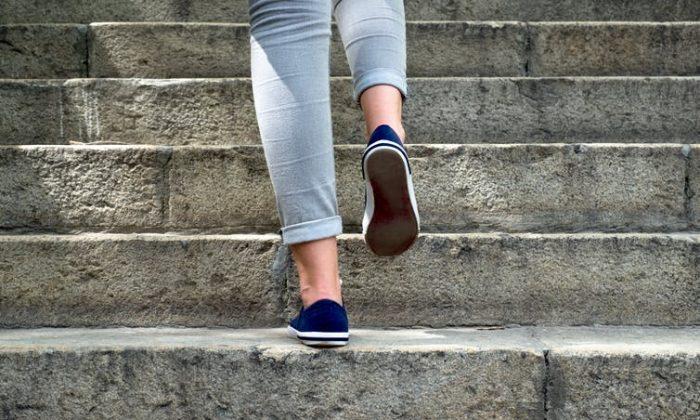One of the largest studies ever, of 20.9 million observations, has revealed regular exercise can not only boost cardio fitness, but lead to a 17 percent reduction in the risk of premature death.
It comprises 26 systematic reviews with 199 unique cohort studies.
“We found that high levels of cardiorespiratory fitness reduce the risk of dying early from any cause,” said senior author University of South Australia’s Professor Grant Tomkinson. “Those with low levels of cardiorespiratory fitness (CRF) are far more likely to die early or develop chronic conditions like heart disease later in life.”
The researchers said that CRF is the ability to perform physical activity for a long period of time like running, cycling, and swimming.
“Specifically, we found that every 1-MET (metabolic equivalent of task) increase in CRF, which is the amount of energy used when sitting quietly, reduced the risk of early death from any cause and heart failure by 11–17 percent, and 18 percent, respectively,” he said.
“For most people, a 1-MET increase in CRF can be achieved through a regular aerobic exercise program.
“The message is quite simple: if you do a lot of ‘huff and puff’ exercise, then your risk of dying early or developing diseases in the future is reduced. If you avoid exercise your health may suffer.”
A “huff and puff” exercise typically refers to any physical activity that raises your heart rate and makes you breathe heavily, often used to improve cardiovascular fitness. These exercises are generally aerobic in nature such as running, dancing, cycling, boxing, and climbing stairs.
Justin Lang, lead author from the Public Health Agency of Canada and adjunct professor at UniSA, says that cardiorespiratory fitness is probably the most important type of fitness for good health.
“If you are already exercising, this is good news; but if you know you need to up your fitness and movement, then this is a timely reminder,” Mr. Lang said.
He highlighted that people can make meaningful improvements through additional moderate physical activity, like brisk walking, at least 150 minutes a week.
“And as they improve their fitness, their risk of death and disease will decline,” he said.
Regular Walks Boosts Longevity
A similar study by Monash University published in BMJ Public Health on April 30, found that older adults who walked for transport instead of taking a car, at least once a week, lived longer than those who did not.In participants with an average age of 75 years, walking instead of using transport like cars, buses, and trains at least once a week was associated with about a 25 percent lower risk of mortality compared to not walking for transport purposes.
Shivangi Shah, the first author and a PhD candidate at Monash University School of Public Health, said that a little goes a long way.

“Our results suggest that even one extra minute is better than nothing. But physical activity does need to be tailored to each person’s capacity. If you have any doubts, talk to your GP,” Ms. Shah said.
“Transport walking is simple, free, and does not need specialist training, making it sustainable and accessible for older people.
These findings underscore the importance of having safe neighborhood environments that encourage walking for transport purposes, senior author Associate Professor Danijela Gasevic said.
“To walk more for transport, we really need good infrastructure for walking—paths and roads connecting places and spaces; and safe environments.”






